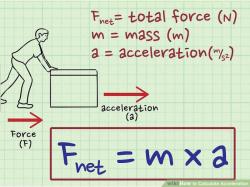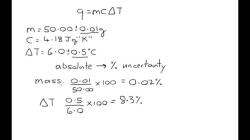How to convert metric measurements?
Converting metric measurements involves converting from one metric unit to another, typically by multiplying or dividing by powers of 10. Here's a step-by-step guide on how to convert metric measurements:
Step 1: Identify the Starting Metric Unit and the Target Metric UnitDetermine the measurement you have and the measurement you want to convert it to. For example, you might have a length in meters and want to convert it to centimeters.
Step 2: Know the Metric PrefixesFamiliarize yourself with common metric prefixes, which represent powers of 10. Some common metric prefixes include kilo-, hecto-, deka-, deci-, centi-, and milli-. These prefixes are used to scale the base unit.
Step 3: Determine the Conversion FactorIdentify the conversion factor between the starting unit and the target unit. This factor depends on the difference in the metric prefixes. If you're moving from a smaller unit to a larger one, divide by the factor; if moving from a larger unit to a smaller one, multiply by the factor.
For example, to convert from meters to centimeters:
- The prefix for meters is "none" (base unit).
- The prefix for centimeters is "centi-."
The conversion factor from meters to centimeters is 100 (because there are 100 centimeters in 1 meter). So, you would multiply by 100 to convert meters to centimeters.
Step 4: Perform the ConversionMultiply or divide the measurement you have by the conversion factor to get the measurement in the desired unit.
For example, if you have a length of 5 meters and want to convert it to centimeters:
- Conversion factor: 1 meter = 100 centimeters (from step 3)
- Calculation: 5 meters × 100 centimeters/meter = 500 centimeters
So, 5 meters is equal to 500 centimeters.
Step 5: Check Your UnitsAlways check that your units make sense in the context of your measurement. In the example above, the units are meters and centimeters, which are both units of length, so the conversion is valid.
Step 6: Round and Format (Optional)If necessary, round the converted measurement to an appropriate number of decimal places based on the precision required. Also, consider formatting the result with the correct units.
That's the basic process for converting metric measurements. The key is to understand the metric prefixes and their relationship to the base units, as well as whether you need to multiply or divide by the conversion factor to get the desired unit.
Converting Metric Measurements: A Comprehensive Guide
The metric system is the international system of units (SI) for measurement. It is a decimal system, meaning that all units are based on multiples of 10. The metric system is used by most countries in the world, but the United States and a few other countries still use the standard system of measurement.
To convert metric measurements to standard units, you can use the following steps:
- Identify the metric unit that you want to convert.
- Find the conversion factor for the metric unit.
- Multiply the metric unit by the conversion factor.
- Round the answer to the appropriate number of decimal places.
Here is a table of some common metric-to-standard conversions:
| Metric unit | Standard unit | Conversion factor |
|---|---|---|
| Meter | Foot | 1 meter = 3.28084 feet |
| Kilometer | Mile | 1 kilometer = 0.621371 miles |
| Centimeter | Inch | 1 centimeter = 0.393701 inches |
| Millimeter | Inch | 1 millimeter = 0.0393701 inches |
| Kilogram | Pound | 1 kilogram = 2.20462 pounds |
| Gram | Ounce | 1 gram = 0.035274 ounces |
| Liter | Gallon | 1 liter = 0.264172 gallons |
Metric to Standard Conversion: Understanding the Process
When converting metric measurements to standard units, it is important to understand the difference between the two systems of measurement. The metric system is a decimal system, while the standard system of measurement is not. This means that it is easier to convert between metric units than it is to convert between standard units.
For example, to convert 10 meters to feet, you would simply multiply by 3.28084. To convert 10 miles to kilometers, you would need to divide by 0.621371.
It is also important to be careful with rounding when converting metric measurements to standard units. You should round the answer to the appropriate number of decimal places, depending on the context in which you are using the measurement.
Navigating the Transition from Metric to Standard Units
If you are used to using the standard system of measurement, it can be difficult to transition to using the metric system. However, there are a few things you can do to make the process easier:
- Start by learning the basic metric units. You don't need to memorize all of the metric units, but you should learn the most common ones, such as meters, kilometers, centimeters, millimeters, kilograms, grams, liters, and milliliters.
- Use a conversion calculator. There are many online and offline conversion calculators available. These calculators can help you convert metric measurements to standard units and vice versa.
- Practice using the metric system. The best way to learn the metric system is to practice using it. Try using metric units in everyday situations, such as when cooking, shopping, or exercising.
With a little practice, you will be able to convert metric measurements to standard units and vice versa with ease.
Here are some additional tips for navigating the transition from metric to standard units:
- Use mnemonic devices. Mnemonic devices are memory aids that can help you remember things. For example, to remember that there are 2.54 centimeters in an inch, you could use the following mnemonic device:
Two fifty four make one inch
- Use visual aids. Visual aids can also help you learn the metric system. For example, you could print out a chart of metric conversions and hang it on your wall.
- Talk to others who use the metric system. If you know people who use the metric system regularly, talk to them about it. They can give you tips and advice on how to use the metric system.
Transitioning to the metric system can take some time and effort, but it is worth it. The metric system is a more logical and consistent system of measurement than the standard system of measurement.













